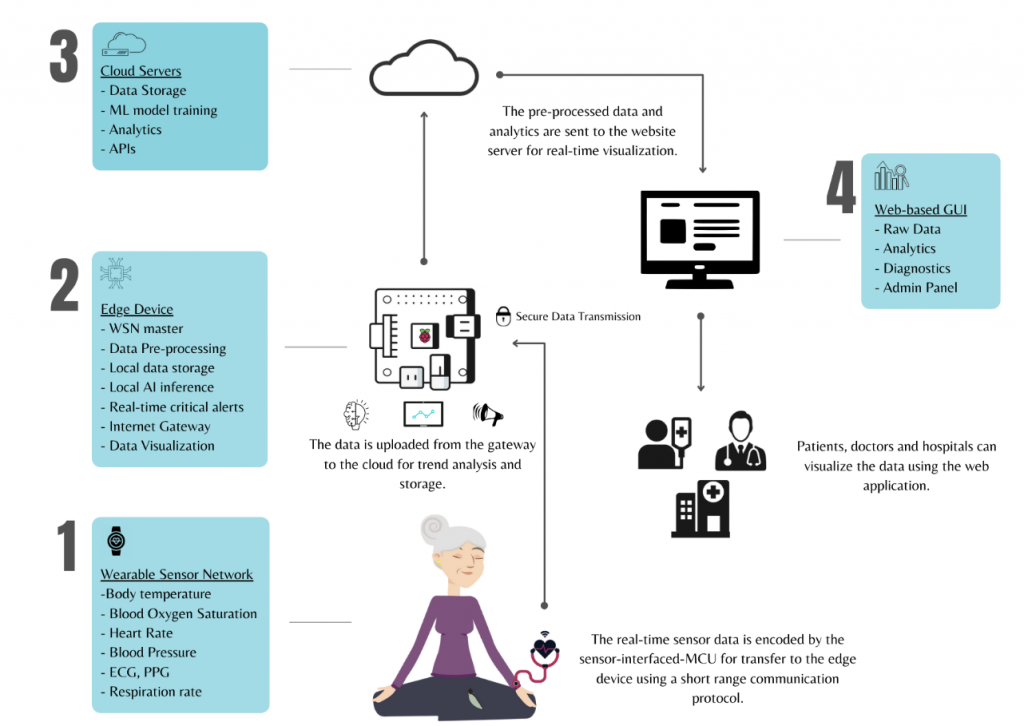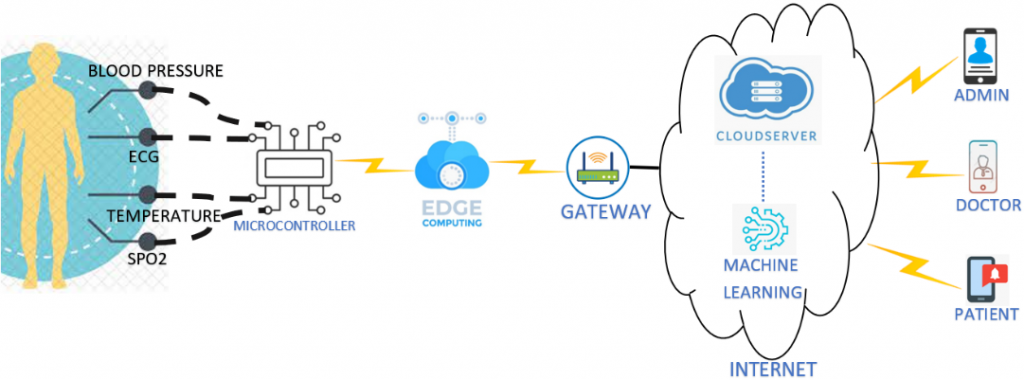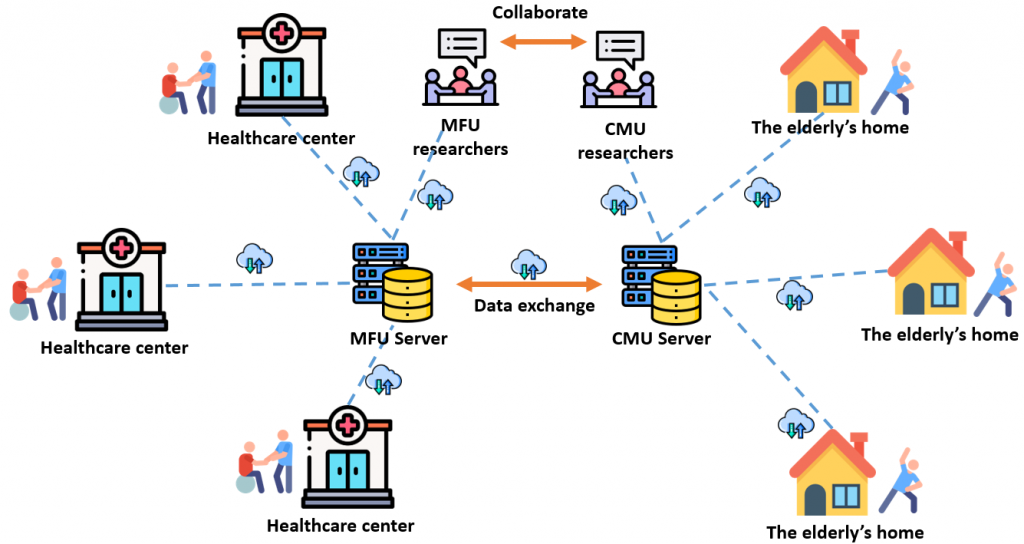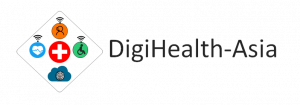Three exciting pilot cases are developed in DigiHealth-Asia that reduce the burden on the healthcare sector in Pakistan, Thailand, and Mongolia. The pilot cases will improve the healthcare services by providing a) cost effective healthcare services, b) reduce unnecessary visits to doctors and hospitals, c) build a health relation between the doctors and patients.
These pilot cases will be used in the specialized courses such as IoT for healthcare, AI/ML for healthcare, and embedded systems for healthcare that will be commenced within the project duration at the partner universities in Pakistan, Thailand, and Mongolia.
1. Remote monitoring of cardiovascular patients


Key characteristics
- The raw sensor data is transferred to the edge using a short-range communication protocol such as Bluetooth or WiFi
- The raw data is sent to the cloud for performing Machine Learning and Artificial Intelligence training and storage.
- A trained model is transferred to the edge for performing local Machine Learning and Artificial Intelligence interference
- In case of abnormality in the patient data, an alarm is generated for the caregivers including relatives, doctors, local hospitals, local drug store, etc.
- The raw data and the trained model output are displayed on a web-based GUI for doctors for making efficient and precise diagnosis and treatment plan.
2. Remote monitoring of mobility disorder patients

Key characteristics:
- MFU focuses on fall risk assessment of the elderly through the physical performance evaluation. The evaluation is done through MFU IoT equipment which transfers the raw data to the MFU server through Internet.
- CMU focuses on physical training and monitoring of the elderly through a smart watch.
- The raw dataset at the MFU and CMU servers is used by their researchers for the training of Machine Learning/Artificial Intelligence models which run at the cloud and the edge.
3. Remote consultation of patients

Key characteristics:
- NUM and MNUMS pilot case is on remote consultation for dentistry
- Dentists take image of patients through an intraoral camera and send them to the edge along with a professional diagnosis using WiFi, Bluetooth, etc.
- After filtering and pre-processing, the data is sent to the cloud server where a Machine Learning and Artificial Intelligence model is trained from the captured dataset and other datasets available on the Internet.
- From the trained model, a report is generated for the dentist which helps him/her for making efficient diagnosis and treatment plan.

